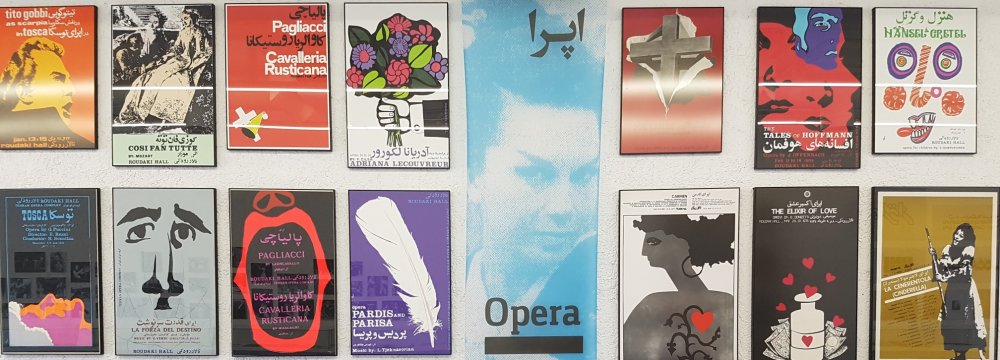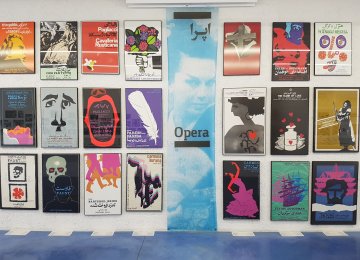The newly-established art gallery Nabshi Center in Tehran is holding an exhibition that narrates the history of the iconic Roudaki Hall in the center of the capital city.
A great part of the exhibition “Roudaki Hall: Graphic, Architecture and Everything” is dedicated mainly to posters designed for art and cultural events that took place in the hall during the first 11 years of its foundation 1967-1978, Honaronline reported.
The complex was designed by Iranian-American architect (of Armenian origin), Eugene Aftandilian, influenced by the Vienna State Opera, and was constructed over ten years starting in 1957. It was equipped with the latest lighting and sound system technologies of the time, with revolving and moving stages.
The main stage consists of three levels (podiums) and the the auditorium has 1,200 seats and two tiers of boxes and balconies.
The posters on display have been sorted into different categories based on the events they announce: operas, theaters, symphony orchestras, recitals as well as a section for events related to traditional Iranian music and ethnic dances.
Names of famous designers Behzad Hatam and Sadeq Barirani can be seen on many of the exhibited posters.
Barirani, 95, who learned graphic designing with the help of, and by reading, foreign journals specializing on the subject, made posters for the hall from the early days of its establishment. He also did the designing and drawings for the first issues of Roudaki Magazine. The job was later taken over by renowned pioneer of graphic design in Iran Morteza Momayez (1935-2005).
It is interesting to note that most posters have been designed under the influence of Polish poster designing, minimalist works with colored backgrounds.
The approach is more apparent in the simple posters made by Hatam. Another known feature of Hatam’s designs is being free from any Iranian symbol or element.
Black and white photos of operas held in the hall are on display. Scenes from theatrical performances of the past are also being shown on a screen.
Architect Aftandilian is introduced in another section through photos, maps and documents.
The exhibit will end on September 14. Nabshi Center is located at No. 51, Khosrow Street, Villa Street, Karimkhan Avenue.






Add new comment
Read our comment policy before posting your viewpoints